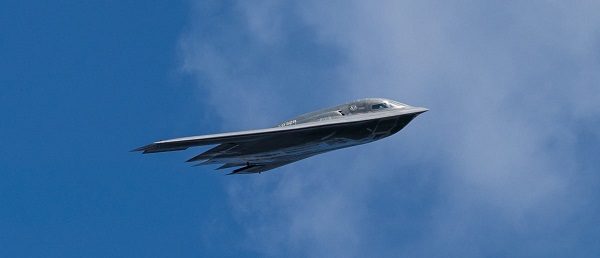armed forces
German plane airlifts 58 Canadians out of Sudan as Canadian plane readies for more
Smoke is seen in Khartoum, Sudan, Saturday, April 22, 2023. Ottawa says it’s working on ways to try evacuating Canadians out of Sudan, and is asking them to register with Global Affairs Canada. THE CANADIAN PRESS/AP, Marwan Ali
By Dylan Robertson in Ottawa
Canada is welcoming the announcement of a new 72-hour ceasefire agreement in Sudan late Monday, though the chief of the defence staff warns the situation in the east African country makes any evacuation operation challenging.
“We have been consumed with this over the last 96 hours to ensure that Canadians are safe,” Gen. Wayne Eyre told the Senate defence committee Monday afternoon.
But he warned that infrastructure to carry out a non-combatant evacuation operation is limited.
“The main international airfield in Khartoum is closed, any other airhead in the locale of Khartoum is very limited,” Eyre said.
“Planning is ongoing. We’ve moved forces into the region, we’ve got more, as we speak, in the air.”
Defence Minister Anita Anand told the committee that Canada is working with allies on efforts to evacuate Canadian citizens.
“We have extracted our diplomats and we are working on additional options and contingency plans for Canadians more generally,” she said in an interview.
U.S. Secretary of State Antony Blinken announced in a statement late Monday afternoon that a nationwide ceasefire will begin at midnight, “following intense negotiation over the past 48 hours.”
Blinken also said the U.S. will co-ordinate with other countries and Sudanese civilians to create a committee to oversee a permanent end to the fighting.
Anand welcomed the news, saying a pause in the fighting would be helpful.
Prime Minister Justin Trudeau provided only a limited update earlier on Monday.
“I just heard earlier today that a German plane lifted off from Khartoum with one German citizen on it and 58 Canadian citizens,” he said Monday afternoon.
“We have a C-17 in the region too, and we will be airlifting as well.”
Trudeau was speaking at a photo-op with German President Frank-Walter Steinmeier in Ottawa, saying the recent airlift is an example of great co-operation between Canada and Germany.
Anand would not say whether Canadian Armed Forces are actually in Sudan, citing operational security.
Heavy gunfire and thundering explosions rocked Khartoum Monday in continued fighting between the country’s military and a paramilitary group called the Rapid Support Forces.
More than 420 people, including at least 273 civilians, have been killed and more than 3,700 wounded since the fighting began April 15, after power-sharing negotiations between the two sides rapidly deteriorated.
Foreign Affairs Minister Mélanie Joly said on Monday that Canada was trying to contact all Canadians in Sudan who have registered with the government, and she repeated calls for anyone who hasn’t yet done so to get in touch immediately.
One Canadian in Khartoum, Waddaha Medani, said she was sent an email from the Canadian government at 2:45 a.m. local time Monday, telling her to “reserve a seat on an evacuation flight” being planned for as early as noon that day.
But because the country’s internet and phone services largely collapsed this weekend, she only got the email later that afternoon, and said she had not heard back directly as of Monday night from the Emergency Watch and Response Centre in Ottawa.
“We’re already frustrated, we already don’t know what’s happening and what’s going to happen. And the communication is basically poor,” she said in an interview.
The 29-year-old said she was left mulling whether to make a dangerous trip Tuesday morning to an airbase on the outskirts of the city, where her sister in Ottawa got wind of an apparent evacuation flight.
“It’s not safe at all. You’re literally taking the chance. You don’t know if you’re going to make it or not. That’s how it is,” Medani said.
“They keep saying there’s a ceasefire at the moment. However, they’re not really respecting it. We still hear gunshots.”
As of Monday, 1,473 Canadians were formally registered in Sudan, but experts say they believe the number of Canadians in the country is likely much higher.
People in the country are facing a harrowing search for safety in the constantly shifting battle of explosions, gunfire and armed fighters looting shops and homes. Food and fuel are leaping in price and harder to find, and hospitals are near collapse.
Amid that chaos, a stream of European, Mideast, African and Asian military aircraft flew into Khartoum all day Sunday and Monday to extract foreign nationals who were moving past combatants at the city’s tense front lines.
France secured use of a military base on the outskirts of Khartoum to use as an extraction point for nearly 500 people of various nationalities who made their way there in their own vehicles or using private security firms.
Others drove hundreds of miles to the Port of Sudan on the country’s east coast, where boats can depart to cross the Red Sea to Saudi Arabia and where some nations are operating flights.
White House national security adviser Jake Sullivan said Washington has placed intelligence and reconnaissance assets along the overland evacuation route from the capital to the port to help protect convoys of evacuees. He said the U.S. does not have any troops on the ground.
Yet U.S. special operations forces carried out a precarious evacuation at the American Embassy in Khartoum on Sunday, sweeping in and out of the capital with helicopters on the ground for less than an hour. No shots were fired and no major casualties were reported.
Global Affairs Canada confirmed that U.S. special forces evacuated six Canadians who were either diplomats or their dependents, alongside dozens of other diplomats from various countries.
“Canada extends its gratitude to the United States for its support,” the department said Monday.
Canada suspended consular services in the country Sunday, but evacuated diplomats are working out of Djibouti to provide advice to Canadians stuck in the country, such as where they can find essentials like fuel and medicines.
They are also helping Canadians who have found their own ways to leave.
As of August 2022, the Khartoum embassy had six Canadian staff and 12 who were locally hired, according to data filed by the department with a Senate committee.
Ottawa is not evacuating its locally hired Sudanese staff, and says it is looking at all possible options to support them.
Immigration Minister Sean Fraser announced Monday that his department will allow Sudanese citizens in Canada to move between temporary immigration streams so they can continue studying, working or visiting family.
“These measures would help ensure the continued safety of the Sudanese population already in Canada, keep families together and give them a safe place to stay,” a news release reads.
Immigration, Refugees and Citizenship Canada will also facilitate immigration applications for Sudanese citizens in Sudan once it’s safe to travel. That means prioritizing applications for temporary and permanent residence that are already in the system, such as family reunification applications and visitor visas.
The department will also waive fees for passports and permanent resident travel documents for those in Sudan who are eligible for those documents and wish to leave.
For many Sudanese people, the ongoing airlift of foreigners is a terrifying sign that international powers, after failing repeatedly to broker ceasefires, only expect a worsening of the fighting that has already pushed the population into disaster.
The military has appeared to have the upper hand in fighting in Khartoum, but the Rapid Support Forces still controls many districts in the capital and the neighbouring city of Omdurman, and has several large strongholds around the country. With the military vowing to fight until the group is crushed, many fear a dramatic escalation.
An earlier ceasefire, which was due to run out Monday evening, brought almost no reduction in fighting.
UN Secretary-General Antonio Guterres warned of a “catastrophic conflagration” that could engulf the whole region. He urged the 15 members of the Security Council to “exert maximum leverage” on both sides in order to “pull Sudan back from the edge of the abyss.”
Joly has spoken with her counterparts in both Egypt and the United Arab Emirates about the need for peace. Cairo has strong links with the Sudanese Armed Forces, and the Emirates have ties to the RSF.
This report by The Canadian Press was first published April 24, 2023.
— With files from The Associated Press, Jordan Omstead in Toronto and Sarah Ritchie in Ottawa.
armed forces
Ottawa’s Newly Released Defence Plan Crosses a Dangerous Line

From the Frontier Centre for Public Policy
By David Redman
Canada’s Defence Mobilization Plan blurs legal lines, endangers untrained civil servants, and bypasses provinces. The Plan raises serious questions about military overreach, readiness, and political motives behind rushed federal emergency planning.
The new defence plan looks simple on paper. The risks are anything but.
Canadians have grown used to bad news about the Canadian Armed Forces (CAF), but the newly revealed defence mobilization plan is in a category of its own.
After years of controversy over capability, morale, and leadership challenges, the military’s senior ranks now appear willing to back a plan that misunderstands emergency law, sidelines provincial authority, and proposes to place untrained civil servants in harm’s way.
The document is a Defence Mobilization Plan (DMP), normally an internal framework outlining how the military would expand or organize its forces in a major crisis.
The nine-page plan was dated May 30, 2025, but only reached public view when media outlets reported on it. One article reports that the plan would create a supplementary force made up of volunteer public servants from federal and provincial governments. Those who join this civil defence corps would face less restrictive age limits, lower fitness requirements, and only five days of training per year. In that time, volunteers would be expected to learn skills such as shooting, tactical movement, communicating, driving a truck, and flying a drone. They would receive medical coverage during training but not pensionable benefits.
The DMP was circulated to 20 senior commanders and admirals, including leaders at NORAD, NATO, special forces, and Cybercom. The lack of recorded objection can reasonably raise concerns about how thoroughly its implications were reviewed.
The legal context explains much of the reaction. The Emergencies Act places responsibility for public welfare and public order emergencies on the provinces and territories unless they request federal help. Emergency response is primarily a provincial role because provinces oversee policing, natural disaster management, and most front-line public services. Yet the DMP document seems to assume federal and military control in situations where the law does not allow it. That is a clear break from how the military is expected to operate.
The Emergency Management Act reinforces that civilian agencies lead domestic emergencies and the military is a force of last resort. Under the law, this means the CAF is deployed only after provincial and local systems have been exhausted or cannot respond. The Defence Mobilization Plan, however, presents the military as a routine responder, which does not match the legal structure that sets out federal and provincial roles.
Premiers have often turned to the military first during floods and fires, but those political habits do not remove the responsibility of senior military leaders to work within the law and respect their mandate.
Capacity is another issue. Combat-capable personnel take years to train, and the institution is already well below its authorized strength. Any task that diverts resources from readiness weakens national defence, yet the DMP proposes to assign the military new responsibilities and add a civilian component to meet them.
The suggestion that the military and its proposed civilian force should routinely respond to climate-related events is hard to square with the CAF’s defined role. It raises the question of whether this reflects policy misjudgment or an effort to apply military tools to problems that are normally handled by civilian systems.
The plan also treats hazards unrelated to warfighting as if the military is responsible for them. Every province and territory already has an emergency management organization that monitors hazards, coordinates responses and manages recovery. These systems use federal support when required, but the military becomes involved only when they are overwhelmed. If Canada wants to revive a 1950s-style civil defence model, major legislative changes would be needed. The document proceeds as if no such changes are required.
The DMP’s training assumptions deepen the concerns. Suggesting that tasks such as “shooting, moving, communicating, driving a truck and flying a drone” can be taught in a single five-day block does not reflect the standards of any modern military. These skills take time to learn and years to master.
The plan also appears aligned with the government’s desire to show quick progress toward NATO’s defence spending benchmark of two percent of GDP and eventually five percent. Its structure could allow civil servants’ pay and allowances to be counted toward defence spending.
Any civil servant who joins this proposed force would be placed in potentially hazardous situations with minimal training. For many Canadians, that level of risk will seem unreasonable.
The fact that the DMP circulated through senior military leadership without signs of resistance raises concerns about accountability at the highest levels. That the chief of the defence staff reconsidered the plan only after public criticism reinforces those concerns.
The Defence Mobilization Plan risks placing civil servants in danger through a structure that appears poorly conceived and operationally weak. The consequences for public trust and institutional credibility are becoming difficult to ignore.
David Redman had a distinguished military career before becoming the head of the Alberta Emergency Management Agency in 2004. He led the team in developing the 2005 Provincial Pandemic Influenza Plan. He retired in 2013. He writes here for the Frontier Centre for Public Policy.
armed forces
Global Military Industrial Complex Has Never Had It So Good, New Report Finds


From the Daily Caller News Foundation
The global war business scored record revenues in 2024 amid multiple protracted proxy conflicts across the world, according to a new industry analysis released on Monday.
The top 100 arms manufacturers in the world raked in $679 billion in revenue in 2024, up 5.9% from the year prior, according to a new Stockholm International Peace Research Institute (SIPRI) study. The figure marks the highest ever revenue for manufacturers recorded by SIPRI as the group credits major conflicts for supplying the large appetite for arms around the world.
“The rise in the total arms revenues of the Top 100 in 2024 was mostly due to overall increases in the arms revenues of companies based in Europe and the United States,” SIPRI said in their report. “There were year-on-year increases in all the geographical areas covered by the ranking apart from Asia and Oceania, which saw a slight decrease, largely as a result of a notable drop in the total arms revenues of Chinese companies.”
Notably, Chinese arms manufacturers saw a large drop in reported revenues, declining 10% from 2023 to 2024, according to SIPRI. Just off China’s shores, Japan’s arms industry saw the largest single year-over-year increase in revenue of all regions measured, jumping 40% from 2023 to 2024.
American companies dominate the top of the list, which measures individual companies’ revenue, with Lockheed Martin taking the top spot with $64,650,000,000 of arms revenue in 2024, according to the report. Raytheon Technologies, Northrop Grumman and BAE Systems follow shortly after in revenue,
The Czechoslovak Group recorded the single largest jump in year-on-year revenue from 2023 to 2024, increasing its haul by 193%, according to SIPRI. The increase is largely driven by their crucial role in supplying arms and ammunition to Ukraine.
The Pentagon contracted one of the group’s subsidiaries in August to build a new ammo plant in the U.S. to replenish artillery shell stockpiles drained by U.S. aid to Ukraine.
“In 2024 the growing demand for military equipment around the world, primarily linked to rising geopolitical tensions, accelerated the increase in total Top 100 arms revenues seen in 2023,” the report reads. “More than three quarters of companies in the Top 100 (77 companies) increased their arms revenues in 2024, with 42 reporting at least double-digit percentage growth.”
-

 Bruce Dowbiggin1 day ago
Bruce Dowbiggin1 day agoHunting Poilievre Covers For Upcoming Demographic Collapse After Boomers
-

 Business1 day ago
Business1 day agoState of the Canadian Economy: Number of publicly listed companies in Canada down 32.7% since 2010
-

 Censorship Industrial Complex1 day ago
Censorship Industrial Complex1 day agoCanadian university censors free speech advocate who spoke out against Indigenous ‘mass grave’ hoax
-

 Alberta1 day ago
Alberta1 day agoHousing in Calgary and Edmonton remains expensive but more affordable than other cities
-

 Digital ID2 days ago
Digital ID2 days agoCanadian government launches trial version of digital ID for certain licenses, permits
-

 Business2 days ago
Business2 days agoJudge Declares Mistrial in Landmark New York PRC Foreign-Agent Case
-

 Business2 days ago
Business2 days agoThe “Disruptor-in-Chief” places Canada in the crosshairs
-

 International2 days ago
International2 days agoWorld-leading biochemist debunks evolutionary theory






